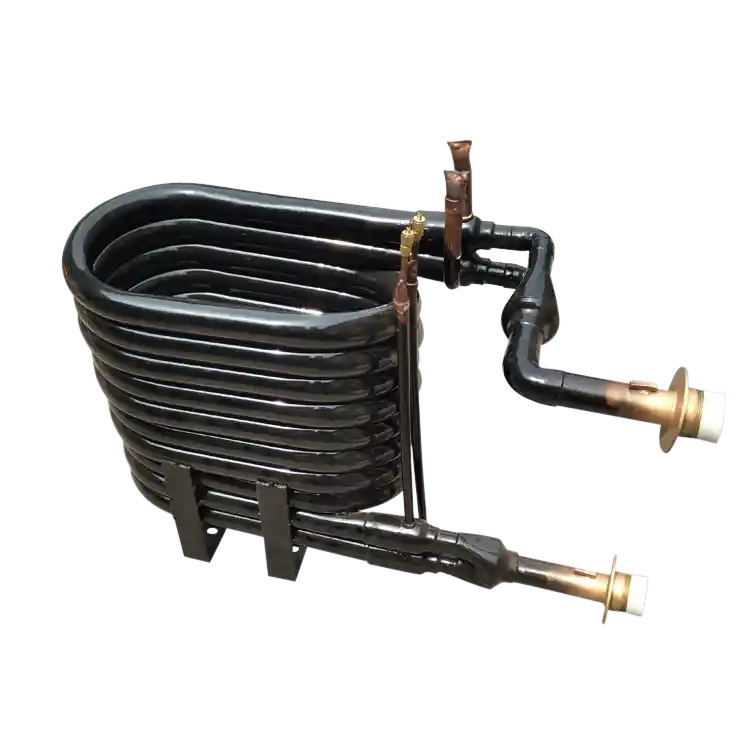Introduction
Polyurethane foam is a versatile and widely used insulation material in the production process of coaxial heat exchangers. This article delves into the unique properties and benefits of polyurethane foam, exploring its applications, advantages, and considerations. By understanding the specific characteristics of polyurethane foam, manufacturers can harness its potential to optimize the performance and efficiency of coaxial heat exchangers.
1. What is Polyurethane Foam?
Polyurethane foam is a synthetic material derived from the reaction of polyols and isocyanates. It is formed by the expansion of a two-component mixture, resulting in a foam with excellent insulating properties. Polyurethane foam insulation offers the following advantages for coaxial heat exchangers:
1.1 Thermal Insulation
Polyurethane foam has low thermal conductivity, which minimizes heat transfer and reduces energy losses. It acts as a barrier, preventing heat exchange between the inner and outer tubes of the coaxial heat exchanger. This insulation capability enhances the overall energy efficiency of the heat exchanger.
1.2 Versatility and Ease of Application
Polyurethane foam insulation can be easily molded and tailored to fit various shapes and sizes of coaxial heat exchangers. It adheres well to different surfaces, ensuring a seamless and tight insulation layer. The versatility of polyurethane foam allows for customized solutions to meet specific design requirements.
1.3 Moisture Resistance
Polyurethane foam exhibits excellent resistance to moisture absorption. This property is particularly important in coaxial heat exchangers, as moisture intrusion can affect insulation performance and lead to corrosion or degradation of the heat exchanger components. Polyurethane foam acts as a protective barrier, maintaining the integrity and longevity of the heat exchanger.
1.4 Cost-effectiveness
Polyurethane foam insulation is relatively affordable compared to other insulation materials. Its wide availability and ease of application contribute to cost savings in the production process of coaxial heat exchangers. The cost-effectiveness of polyurethane foam makes it an attractive choice for manufacturers aiming to optimize performance without compromising budget constraints.
2. Considerations and Limitations
While polyurethane foam offers numerous benefits for coaxial heat exchangers, it is essential to consider certain factors and limitations during the material selection process:
2.1 Temperature Resistance
Polyurethane foam has a temperature limit beyond which it may degrade or lose its insulating properties. Manufacturers should assess the operating conditions of the heat exchanger and ensure that the chosen polyurethane foam grade can withstand the anticipated temperature ranges without compromising performance.
2.2 Environmental Impact
Polyurethane foam may emit volatile organic compounds (VOCs) during the curing process. Manufacturers should adhere to proper installation techniques and take necessary precautions to minimize VOC emissions. Additionally, the environmental impact of disposing of or recycling polyurethane foam should be considered to ensure sustainable practices.
2.3 Application Techniques
Proper installation techniques are crucial for achieving optimal insulation performance with polyurethane foam. Manufacturers should follow recommended guidelines, such as surface preparation, correct mixing ratios, and adequate curing time, to ensure a well-bonded and effective insulation layer.
3. Conclusion
Polyurethane foam insulation offers significant advantages for coaxial heat exchangers, including thermal insulation, versatility, moisture resistance, and cost-effectiveness. It provides a reliable and efficient solution to minimize heat loss, enhance energy efficiency, and ensure the long-term performance of the heat exchanger.
Manufacturers should carefully consider temperature resistance, environmental impact, and application techniques when selecting and installing polyurethane foam insulation. By leveraging the potential of polyurethane foam, coaxial heat exchanger manufacturers can optimize their products, delivering superior performance and contributing to sustainable and energy-efficient solutions.


